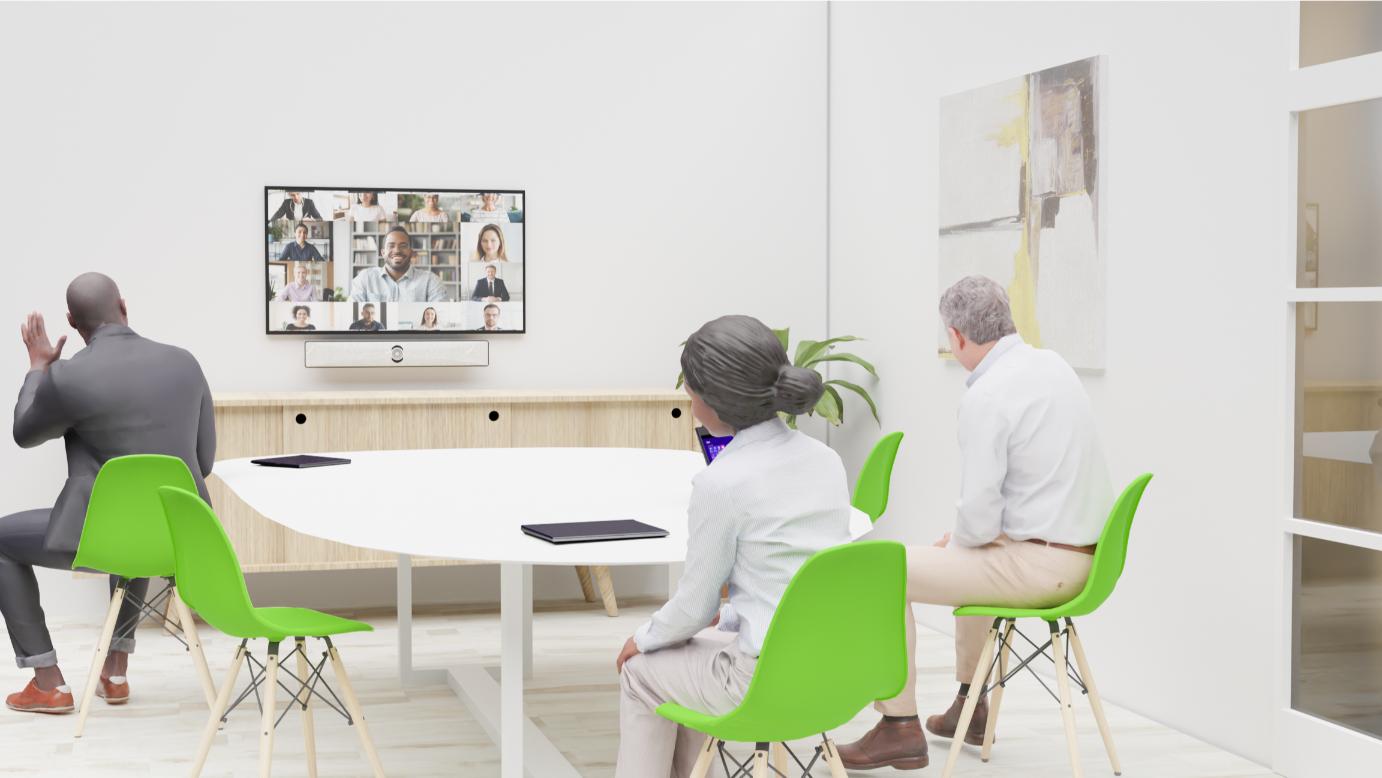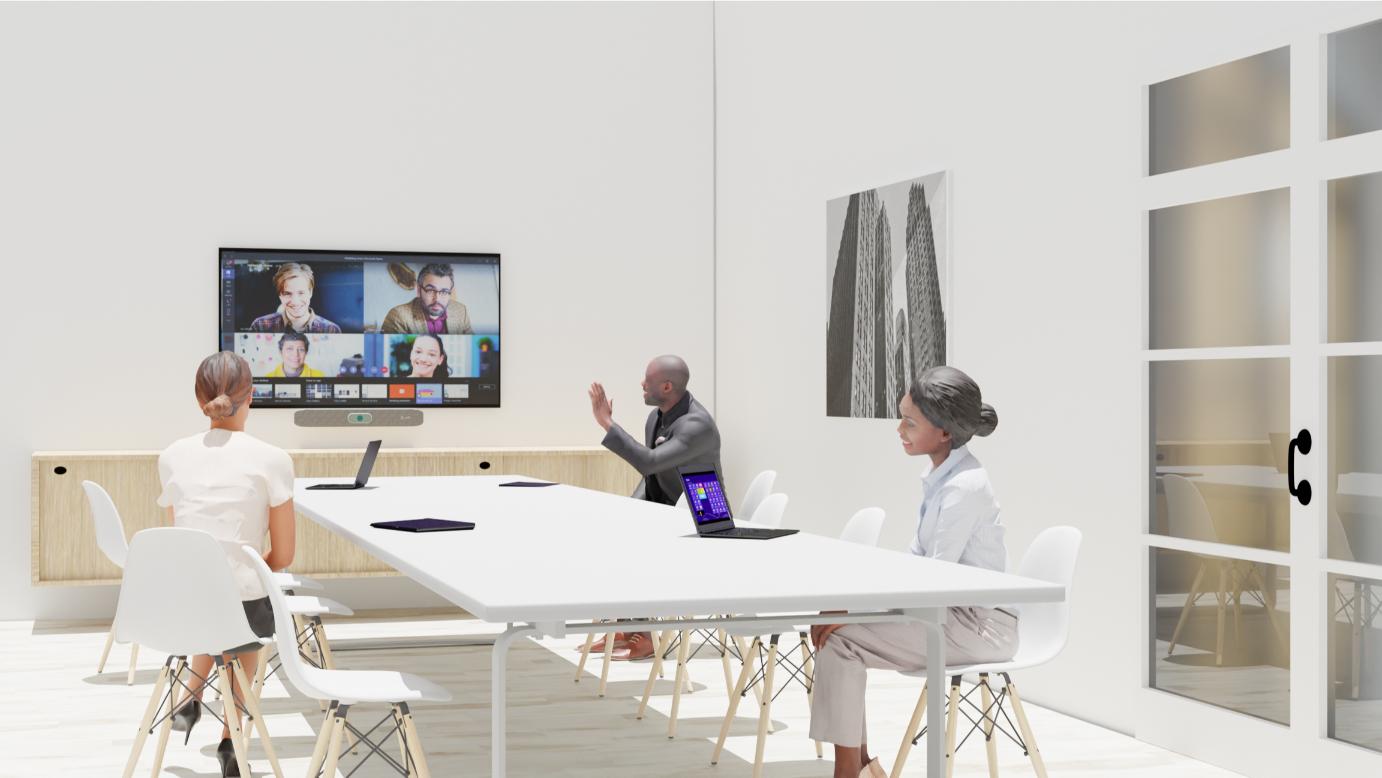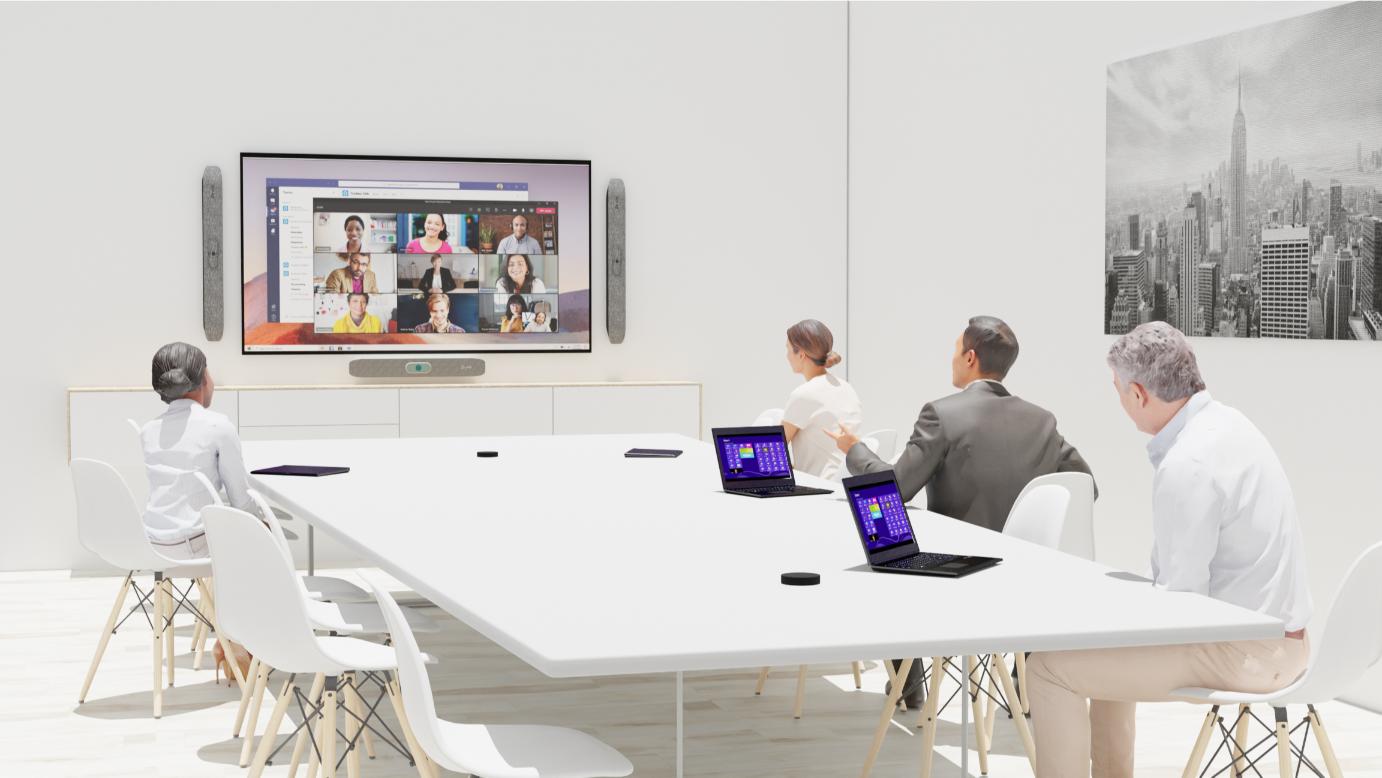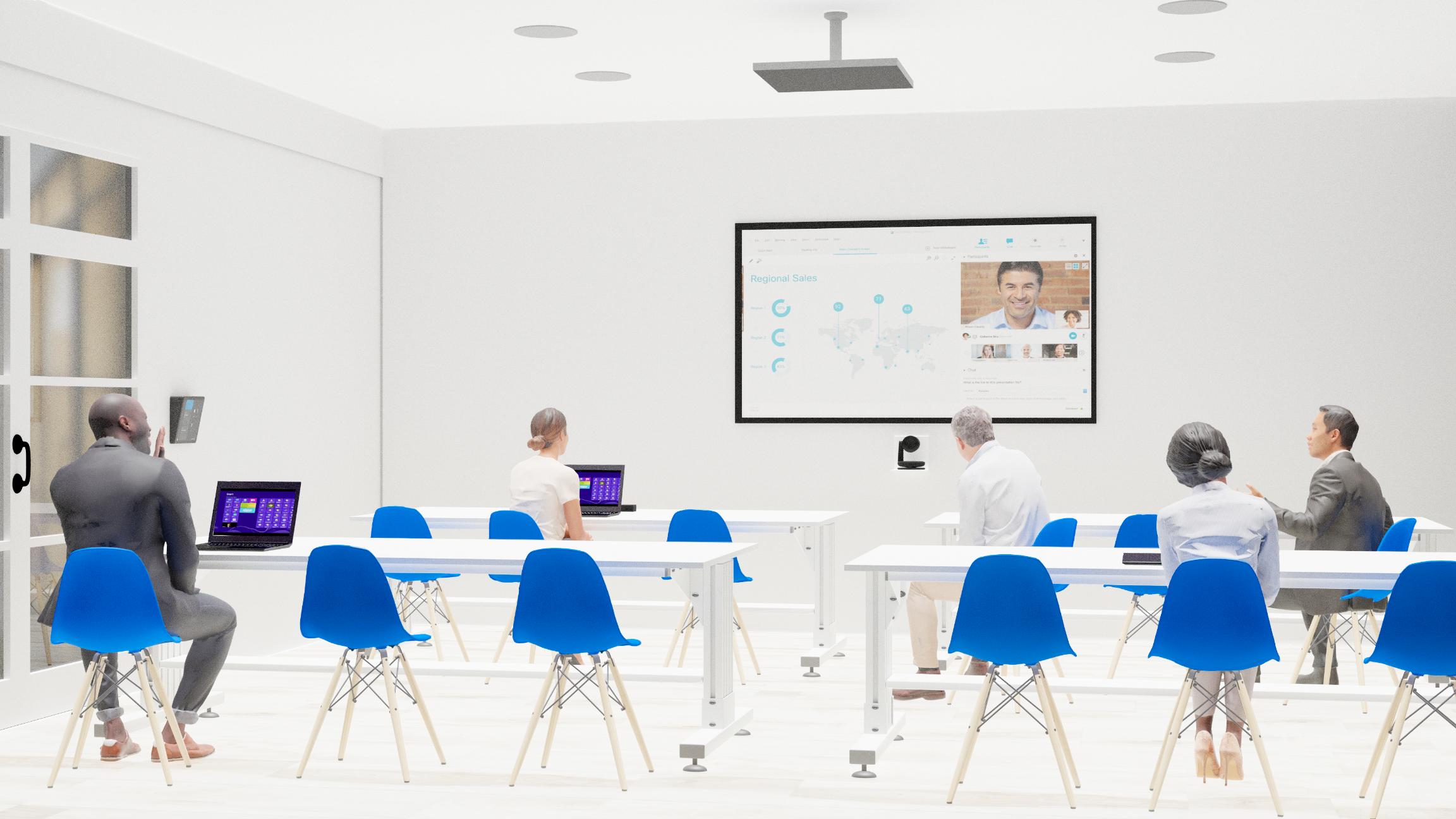When outfitting meeting rooms, integrating AV, and deploying UC applications, designs should follow the latest ADA Standards to ensure accessibility for all team members. AVI-SPL’s design and engineering teams can help you ensure everyone can use your collaboration spaces and tools. Top considerations include:
Rapidly deployable meeting
rooms featuring leading
AV and UC solutions

Based on our decades of meeting room experience and client success, we’ve curated and configured reference designs and best practices to help create your ideal digital workplace.
Room designs provide an equitable, accessible, and positive experience for all hybrid participants. We support your preferred UC platforms, such as Microsoft Teams, Cisco Webex, Zoom, and Google Meet.
End-user and IT benefits
Meeting room reference designs follow collaboration technology standards that save time for IT support staff and end users. When the same tools and applications are in all conference rooms, teams know how to use the solutions in every space.
Help desk teams also limit the number of solutions they need to support. Other benefits include increased productivity, better employee experience and satisfaction, and higher video adoption rates.
-
Webex by Cisco
-
Google meet
-
Microsoft
-
Zoom
Meeting Room Design Considerations
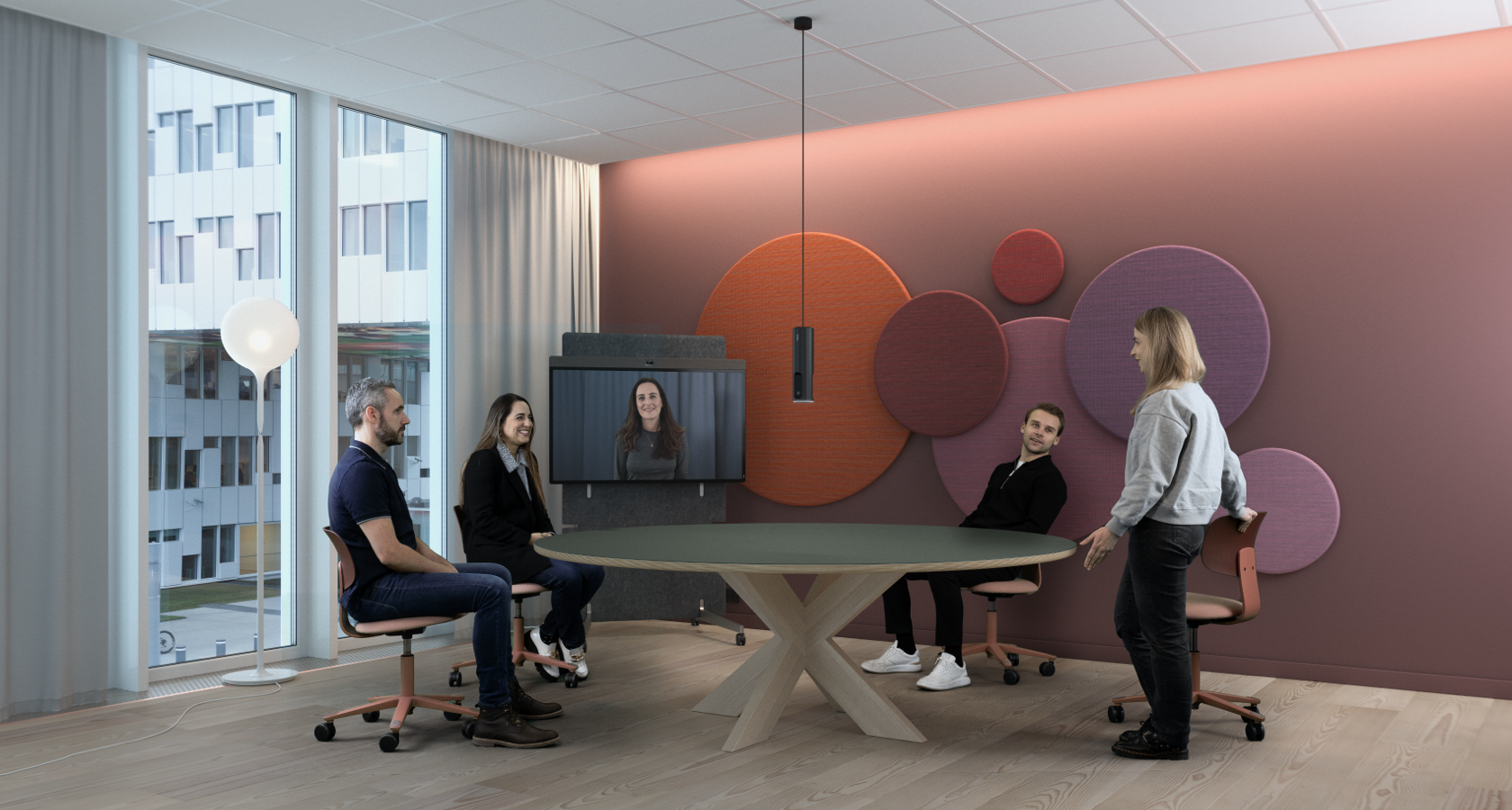
Interoperability
Deliver a native platform experience across your preferred solutions.
Ease of Use
Make meeting effortless with technology standards, automation, and simple control UIs.
AI-Powered Technology
Deploy the latest tools, including devices, software, translations, summaries, and note-taking.
Sustainability
Choose technology providers that support company sustainability goals.
Accessibility and
ADA standards
-
Furniture placement and clearance
-
Keeping room controls within everyone’s reach
-
Touch-less interfaces like voice control and mobile apps
-
Options for team members with hearing and vision challenges
-
Enabling remote attendees to be seen and heard clearly by everyone in the room, and on-site employees can see and hear virtual attendees
